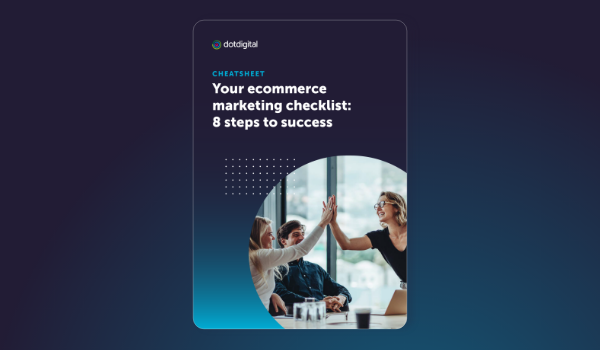

How to keep customers engaged when your product has a long lifecycle

Email marketing is one of the strongest channels there is, but when your product or service has a long lifecycle, it can be hard to know how to keep the relationship thriving.
What does long lifecycle mean?
When we say long lifecycle we mean products or services that last a long time before another purchase is likely. Some examples include:
- Ecommerce: Take a mattress retailer for example, how do you send relevant communications to someone who probably won’t buy from you for another eight or so years?
- B2B: The B2B world is often centered around long contracts, or equipment that is designed to last at least a couple of years.
- Not-for-profit: In the not-for-profit sector, some people donate regularly, such as every payday, whilst many will donate irregularly, sometimes leaving years between donations.
- Subscription businesses: Especially for models where customers renew – or don’t renew – annually. Brands need to keep customers engaged in the meantime.
How email can help with long lifecycle marketing
Email marketing is all about engagement, it’s a communication channel above all else. Even if a repeat purchase is a long way off, think about what you can offer customers post-purchase, and how they can add value to your brand.
We all know that acquisition is an expensive and difficult stage in your marketing strategy. So it’s important to recognize the value in these existing customers and not neglect them. It’s about the long game.
Let’s look at what you can do to keep them engaged.
Tap into their network with a referral program
If you know your customers aren’t likely to purchase from you in the near future, that doesn’t mean their friends and family won’t. A referrals program is a great way of offering value to your customers, and is especially valuable if you’re in an industry with less frequent purchasing patterns. A good referral program can really improve your customer acquisition. Nielsen found that 92% of consumers trust referrals from people they know, and people are four times more likely to buy when referred by a friend.
A referrals program goes hand in hand with email marketing. Email campaigns can spread the word, and integrate with your referral program to keep users updated at each stage. Set up a referrals program that offers a reward to anyone your customer recommends who goes on to make a purchase, and a reward for the referrer too of course. Work out what fits your business model in terms of discount, or reward. You may need to think outside of the box here, a simple 10% off for both of you isn’t appealing if they have no need to purchase from you again for a while.
Sports retailer Peloton offer a refer a friend scheme where both parties get a reward of £100 credit, available to use on accessories for their new hardware. This is a great way of using referral schemes to offer value to both parties, and draw attention to any smaller, complimentary products you offer that can bridge the gap between larger, less frequent, purchases.
Think about how you can reward customers for referrals, some sort of discount, a free gift, a donation to charity in their name, or access to discounts for other vendors are all options to explore. Once you’ve got your referral program up and running, ensure you’re shouting about it in your marketing emails.
Upsell and cross-sell
Cross-selling and upselling are widely used marketing tactics that can be especially valuable if you sell products that last a long time. It won’t work for every business, but can bridge the gap between sales for some. Use email marketing campaigns to let customers know about complimentary products, both in follow-up campaigns immediately after purchase, and in one-off promotional campaigns.
In practice, let’s go back to the example of a mattress store, this could be highlighting complimentary products such as pillows and bedding – something replaced more often. For subscription brands, offering one-off upsells such as an upgrade to include a bottle of wine in a meal subscription service are common place.
For B2B brands, cross-selling could be promoting an industry event you are running or speaking at. Consider the value in your contacts, and remember they are already fans of what you do, so could be super interested in any other initiatives you run.
Compare the Market ran a promotion in the UK where you got sent a cuddly meerkat toy (their brand characters) for every insurance product you took out. It was clever marketing, the meerkats became collectors items and the scheme lasted seven years due to its popularity. This highlights that cross-selling can be super successful, even on bigger, longer lasting purchases – especially with some incentives behind it. It also shows that incentives don’t need to be discounts, and sometimes thinking outside the box will make your brand stand out.
If your product offering is very specific and this sort of model wont work, consider possible partnerships. Partnering with a similar/complimentary brand means you could both widen your reach. Especially in the not-for-profit sector, where a joint campaign could hugely increase the reach of both charities.
Grow your reach with social media
When you’re unlikely to get any revenue from a customer again for a while, think of other value available. One way is to encourage your customers to follow you on social media. Social media is a lot less intrusive than emails, making it a more passive channel in some ways. This means customers are more likely to follow you and stay engaged without much thought – even as time passes and they possibly become less interested in your products.
Social media and email marketing work well together, and social media is a great way of increasing your touchpoints. As discussed, referrals are super valuable when you have a long lifecycle product, and social media posts are super easy for your customers to share with their network.

This joint Instagram post from Silentnight and Bensons for Beds is a great example of a brand partnership of complimentary products. The competition is also a great way of growing reach, asking entrants to follow both brands, and tag a friend too.
Increasing your following, and the reach of your social posts is an obvious benefit for most brands. For not-for-profit brands especially, a customer signing a petition or sharing your posts on social media is extra support that adds value to your brand, whilst costing them nothing. Plus, it keeps your brand front-of-mind.
Gather user-generated content
Another thing to consider is how you can get content from these customers. We all love free content right? User-generated content (UGC) can add so much value to your campaigns. This is content such as written reviews, and photos or videos of your product in-situ. Due to the less polished nature of UGC, and the fact it’s straight from the horse’s mouth, means customers respond well to it.
Use email campaigns to let your customers know that you’d love to see their pictures of your product for example. Ensure it’s easy for them to share with you, a pre-defined hashtag works great – bringing in social media once more.
Some users will create this with no incentive, happy just for their content to be reposted by their favorite brand, whilst others will need a bit more of a push. Competitions work well to encourage UGC, especially if you’re after a certain type of content – e.g. ‘Share a festive picture of your *new product* to be in with a chance of winning a voucher’. Thereby giving you lots of holiday style UGC to add to your holiday season campaigns. Clever, right?
Reviews are also part of UGC and are super valuable to your business. Our latest release means that you now have more choice than ever to integrate a review platform with your Dotdigital account. Making it super easy to send out requests for reviews via email, and then utilize these reviews in your email marketing campaigns and website.

This example from Adidas keeps the review request clean and simple, with an obvious CTA. It also demonstrates incentivizing reviews, rewarding users with points for leaving a review, making it a value exchange.
Top tip: Once you’ve got some great UGC, add it into your welcome campaigns as the hit of social proof can work wonders. You can learn more about how UGC and email work together in our guide.
Offer follow-up content
Aftercare adds value to the customer, sending valuable and interesting content will add to their overall experience with your brand. Use email campaigns, perhaps a monthly newsletter, to share content such as blogs and guides. Topics could be related to the product or service you offer, such as how to get the most from it, and to share information and insights on other relevant topics in the space – a bit like this blog in fact.
Offering content that the customer will enjoy consuming ensures that you stay front of mind. By keeping the relationship active, you increase the chances of them coming to you for their next purchase, and recommending you to friends and family in the meantime.
Any subscription with fresh content, whether physical or digital, that arrives to users at a set time interval will keep the relationship active. Capitalize on these touch points with your email marketing campaigns. You can send an email campaign to arrive at the same time as your product, with extra tips, context, or insights. For example, a flower subscription this could be sharing how best to care for that month’s specific blooms, and the meaning behind the selection.
Keep the spark alive
Just like any long-term relationship, you need to keep the spark alive. This means not forgetting their birthday, or your anniversary.

Set up automation programs which celebrate their birthday and your anniversary of doing business together. Unlike traditional ecommerce versions of these campaigns, it probably wont make sense to offer a discount. As shown by Uber, pulling in customer data to tell a story and convey how much they mean to you is super effective in growing the relationship, and therefore loyalty.
Contents
Natasha Lainsbury

Your ecommerce marketing checklist
Ecommerce is booming, and the competition is fierce. Check out our helpful cheatsheet breaking down the eight steps for ecommerce success.
Get your copyStay on top
Get the latest and greatest marketing insight delivered to you weekly
Your email address will be handled in accordance with our Privacy Policy. We gather data around email opens & clicks using standard technologies including clear gifs to help us monitor and improve our newsletter.

